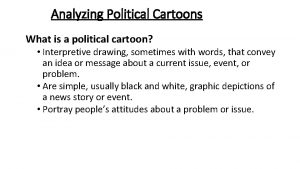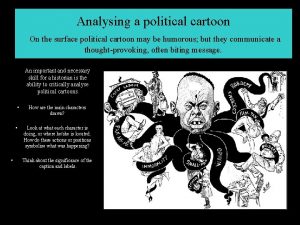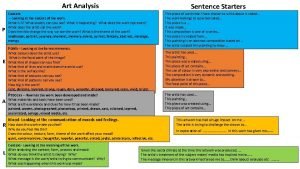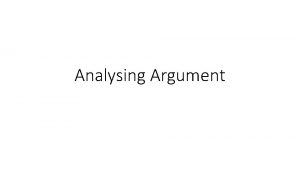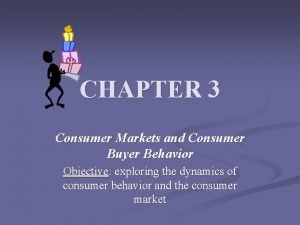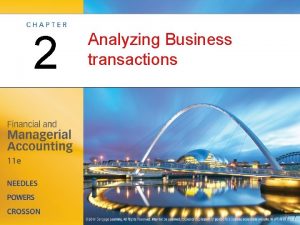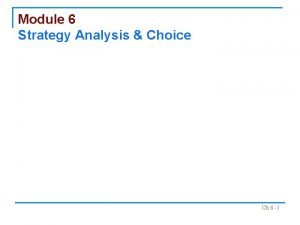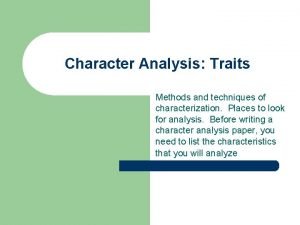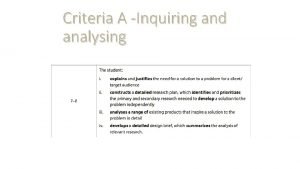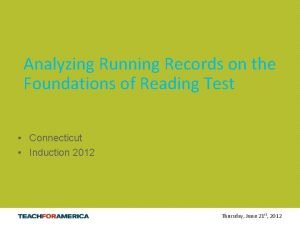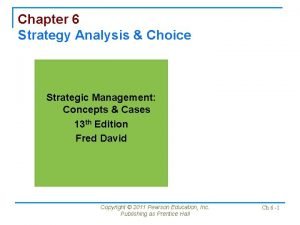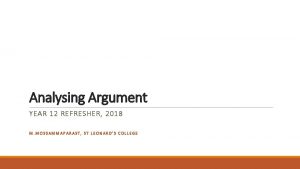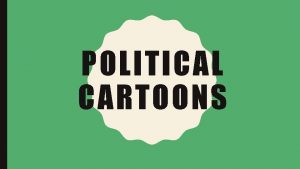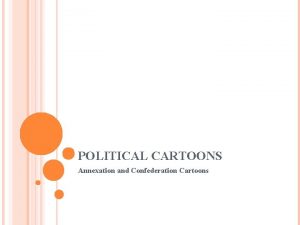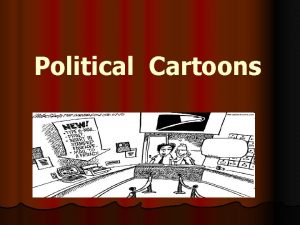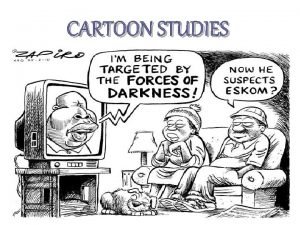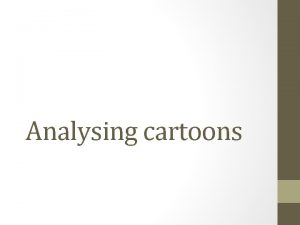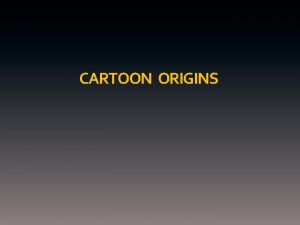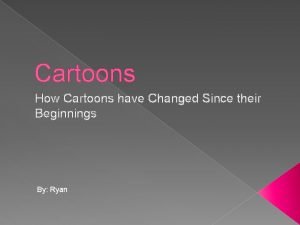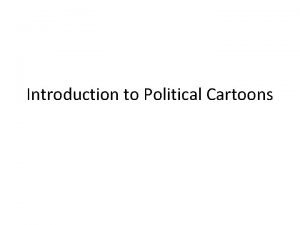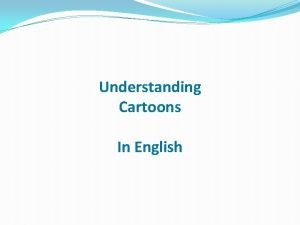ANALYSING CARTOONS What is a cartoon Cartoons are














- Slides: 14

ANALYSING CARTOONS

What is a cartoon? Cartoons are pictures that are designed to make us laugh, to comment on current events or tell stories. They comment on a political or social event in a humorous way. Satire is used to criticise a person’s weakness or stupidity by ridiculing/making fun of it Irony is when something is said but the opposite is meant Sarcasm is a very harsh form of irony, intended to insult, hurt or humiliate

When you study cartoons look at: Characters: Are they stereotypes or caricatures? Background & Setting: Where & when is the scene taking place? Language: Is formal /informal register used? How are the sentences structured? Punctuation: Used to portray emotions. Actions: Look at facial expressions and symbols or lines used to portray movement/emotion. Objectives: Is the aim to inform, educate or entertain?

An example of a cartoon – one picture/frame

An example of a Comic Strip Two or more frames Frame 1 Frame 2 Frame 3

Analysing Cartoons A cartoon can be a single frame or consists of a series of frames. Movement is indicated by vertical, curved and diagonal lines. Speedy action is indicated by streaky lines or the action leaving the frame. Fonts are also changed for emphasis.


Words in bold = loud Smile = happy Jagged speech bubble, bold print and question/exclamation marks indicate shouting. Mom is hysterical: wide open eyes and mouth. The asterisk indicates confusion or a thought process. Blank expression emphasises confusion. Hands on head = despair!

Shows she has moved away Emotions? Evidence?

Facial Expressions Facial expressions are key to the character’s thoughts, feelings and emotions. ♣ What facial expressions are used? ♣ Do they change (sequential cartoons)? ♣ How do expressions compare to another’s expression? ♣ Is it an expression we expect?


Visual literacy Exercise Activity • In your classwork book (language side), write the heading Cartoons and the date. • Rewrite slides 2, 3 and 6 in full sentences. • Do the activity on slide 13 and 14.

Frame 1 Frame 2 Frame 3

Questions 1. Who are the two men in the cartoon? 2. Refer to Frames 1 and 2. answer. 2. 1 Describe how the man on the left is feeling. Refer to his body language and facial expression to support your 2. 2 Which word in the speech bubble in Frame 2 tells us how the man on the right is feeling? 2. 3 How do his body language and facial expression show us what he is feeling? 2. 4 Why does he feel this way? 2. 5. 1 What does the man on the left mean when he says, “Taxi drivers are only human”? 2. 5. 2 What is he implying? 3. Refer to Frame 3. 3. 1 Describe how the taxi drivers are driving. 3. 2 How do the drawings show you this? 3. 3. Why does the man add “super” to “human”? 4. The cartoonist is poking fun at taxi drivers. Do you think they deserve this? Give a reason for your answer. Is there any wordplay?
 Political cartoon exaggeration
Political cartoon exaggeration Insidan region jh
Insidan region jh The chinese pest cartoon
The chinese pest cartoon Sentence starters for photography analysis
Sentence starters for photography analysis Analysing argument
Analysing argument How do consumers respond to various marketing efforts
How do consumers respond to various marketing efforts Analysing business transactions
Analysing business transactions Analysing the 6 strategic options megxit
Analysing the 6 strategic options megxit Techniques of characterization
Techniques of characterization Inquiring and analysing
Inquiring and analysing Analyzing running records
Analyzing running records Analysing market data
Analysing market data Chapter 6 strategy analysis and choice
Chapter 6 strategy analysis and choice Strategy analysis and choice largely involves making
Strategy analysis and choice largely involves making Analysing argument
Analysing argument
